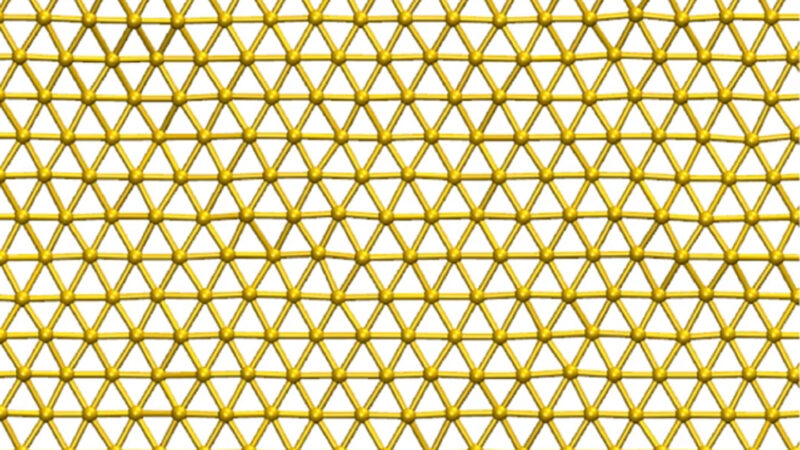Goldene (noun, “Goal-DEEN”)
Goldene is a single layer of gold atoms. This makes it a 2-D, or two-dimensional, material — a sheet of some substance that is only one or two atoms thick. Hundreds of other 2-D materials have been crafted from atoms of other elements. Graphene, for example, is a single layer of carbon atoms. And phosphorene is a single layer of phosphorus. But goldene is the first 2-D material built from metallic atoms. 2-D materials made from different types of atoms can have different properties and uses.
It’s difficult to create atom-thick layers of metal, because the atoms of these elements tend to bunch together. As a result, metallic atoms often clump up into particles, rather than lying flat as 2-D sheets. Researchers only reported creating goldene for the first time earlier this year.
To make goldene, the team first made a 3-D material. It contained one-atom-thick sheets of silicon sandwiched between thicker layers of a compound called titanium carbide. The researchers then added gold on top of the titanium carbide–silicon sandwich. When the gold atoms seeped through the material, they took the places of the silicon atoms. That created a one-atom-thick layer of gold inside the material. A potassium-based solution could then carve away the material around these 2-D gold sheets. And voila: They had goldene.
Goldene might be used to build light sensors or electronics. It could also be used as a catalyst to jump-start chemical reactions. For instance, it could help split water molecules to produce hydrogen, which can be used as fuel.
In a sentence
Goldene is just one of a wide variety of 2-D materials with many different useful properties.
Check out the full list of Scientists Say.




